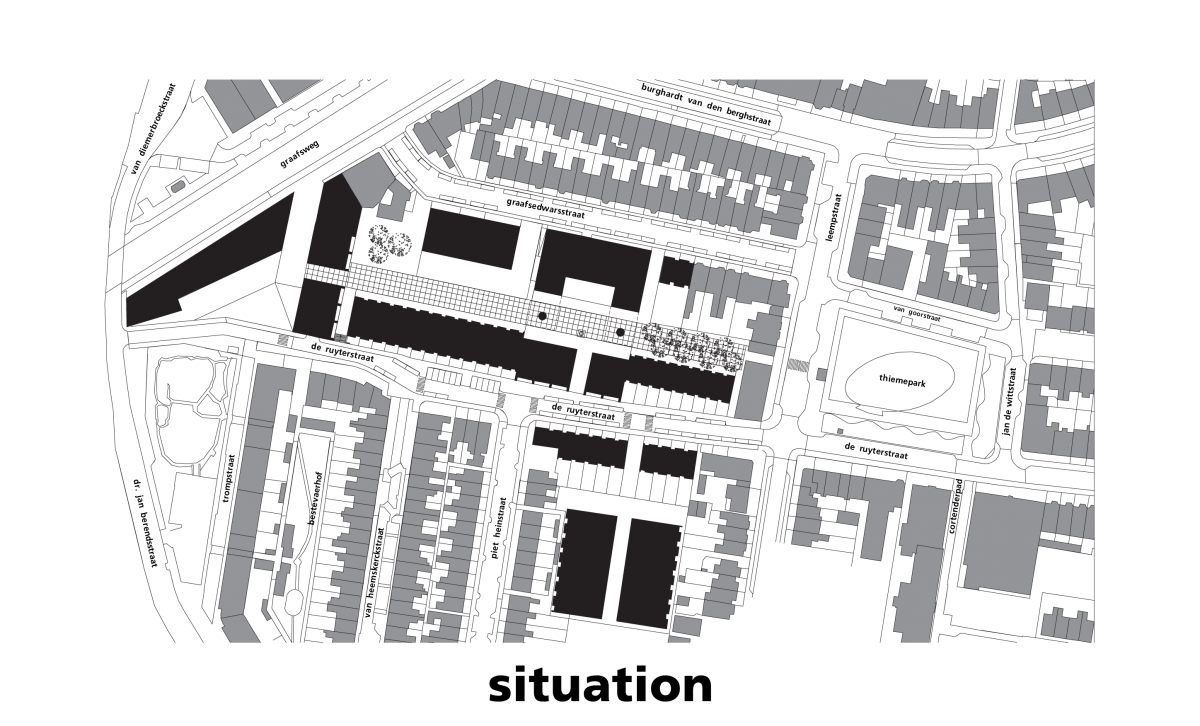A new past for the Dobbelman site
The former Dobbelman detergent factory in Nijmegen is undergoing redevelopment. We drew up a masterplan, or visual quality plan, for the site with about 50,000 m2 gross floor area and urban in character, according to a ‘patchwork model’ based on a composition of volumes of various scale, related to the original organically grown layout of the factory site. Industrial-looking residential buildings and transformed structures alternate with existing buildings and new urban dwellings, offering differentiated housing for a wide variety of people. Moreover, the chimney stack and illuminated advertising signs have been preserved to highlight the industrial character. The courtyard, the ‘wash street’, is a semi-public space, surfaced with Stelcon concrete slabs from the former factory site. Residents themselves are free to use this non-programmed space as they wish.
Participation: the open planning process
The patchwork model lends itself perfectly to the involvement of local residents. Moving around programme elements suits the original character of the factory site. In addition, various themes are prepared in working groups.
Residential factories
Some of the new development is architecturally elaborated by MR A&U, while the design of the remaining buildings is being supervised by MR to ensure unity in diversity: three ‘residential factories’, a combination of commercial activity and housing. In the case of the former L building, the shell was preserved and filled with studios and workspaces for art and culture, all topped by eleven large loft apartments with tall and freely dividable spaces. Retractable facade panels allow outdoor areas to extend the space of the lofts. The sturdy brickwork facades and aluminium roofs have an industrial feel.
Assisted living facility
In addition to housing and workspaces, the plan includes an assisted living facility with a psychiatric day centre on the ground floor. Above it, assisted living units are grouped around a huge conservatory with plants, creating a protected semi-outdoor environment.













